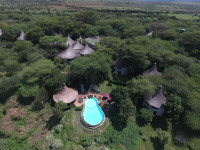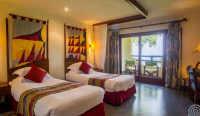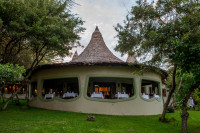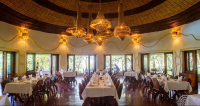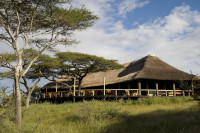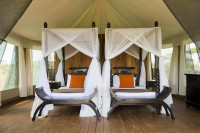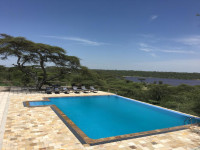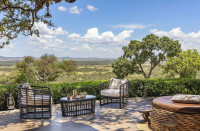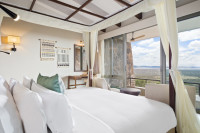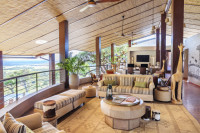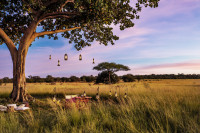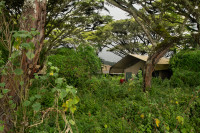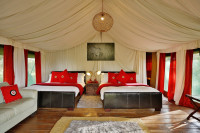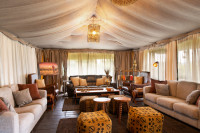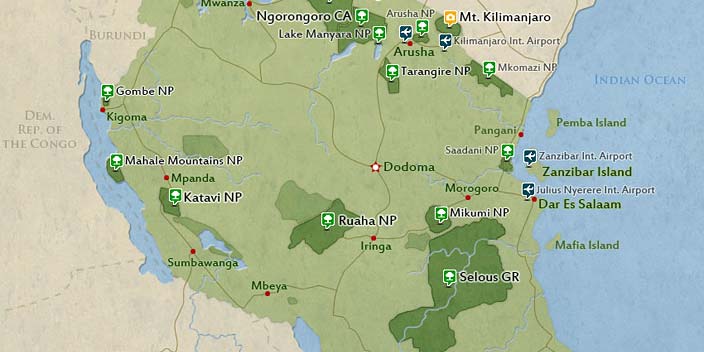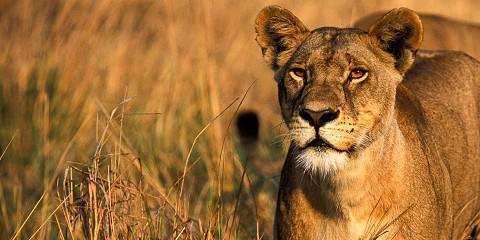
$3,553 pp (USD)
2 travelers on Start dateArrival
Arrival

Day 1
Arusha
Arusha
Upon arrival at Kilimanjaro International Airport (45 minutes from Arusha), you will be met and transferred to Gran Melia Arusha for your overnight stay. If you arrive early enough, we can arrange a tour of the city so you can experience the local way of life.
- Main Destination:
- Arusha (City)
- Accommodation:
- Gran Melia Arusha
- Meals & Drinks:

Day 2
Arusha - Tarangire National Park
Arusha - Tarangire National Park
After breakfast, your safari guide will pick you up from the hotel and drive you to Tarangire National Park, a journey that takes approximately two hours. Take in the wildlife and spend the night at Lake Manyara Serena Lodge. Breakfast, lunch, and dinner are provided, and each person will receive daily drinking water.
Covering an expansive area of almost 3000 sq km, Tarangire National Park is renowned for its abundant elephants and iconic baobab trees. The park derives its name from the Tarangire River, which crosses through the park. Tarangire is particularly captivating during the dry season (June - November) when wildlife concentrations rival those of the Serengeti. The river becomes a focal point, attracting vast populations of elephants and other animals in search of water. The park's diverse habitats and the permanent water source of the Tarangire River contribute to its rich biodiversity, hosting over 2000 elephants and 500 bird species.
- Main Destination:
- Tarangire National Park
- Accommodation:
- Lake Manyara Serena Safari Lodge
- Meals & Drinks:

Day 3
Tarangire National Park - Ndutu
Tarangire National Park - Ndutu
After breakfast, you will drive to the southern Serengeti, specifically the Ndutu area, where part of the Great Migration occurs. The journey takes approximately three hours. You'll spend the night at Lake Masek Tented Lodge. Breakfast, lunch, dinner, and drinking water will be provided.
The Serengeti plains serve as the backdrop for the world's most remarkable wildlife spectacle: the migration of 1.5 million wildebeest in search of fresh pastures. Annually, this massive herd, accompanied by over 200,000 zebras and gazelles, migrates in a clockwise direction around the Serengeti, reaching the Masai Mara in Kenya, and then returning to the Serengeti for calving (with over 8,000 wildebeest born daily between mid-February and mid-March). Covering more than 2,500 km each year, they face constant threats and are trailed by some of Africa's most formidable predators. Depending on the timing of your visit, your driver-guide will be able to share with you the herd’s current location in Ndutu.
- Main Destination:
- Ndutu (Southern Serengeti NP)
- Accommodation:
- Masek Tented Lodge
- Meals & Drinks:

Day 4
Ndutu - Central Serengeti
Ndutu - Central Serengeti
You will embark on a half-day game drive in Ndutu before proceeding to the Central Serengeti. Your overnight will be at the Serengeti Melia Lodge. Breakfast, lunch, dinner, and drinking water will be provided.
Serengeti National Park stands as the world's last great wildlife refuge, housing an estimated three million large animals. Most of these animals participate in a seasonal migration, considered one of nature's wonders. Encompassing an area of 14,763 sq km, the name "Serengeti" originates from the Maasai word “siringet,” which translates to endless plains.
- Main Destination:
- Serengeti National Park
- Accommodation:
- Melia Serengeti Lodge
- Meals & Drinks:

Day 5
Serengeti National Park - Ngorongoro Crater
Serengeti National Park - Ngorongoro Crater
Enjoy a half-day in the Serengeti, followed by an afternoon drive to the rim of the Ngorongoro Crater for an overnight stay at Ngorongoro Lemala Lodge. Breakfast, lunch, dinner, and drinking water will be provided.
There are several documented resident lion prides within a one-hour game drive of the Seronera. As the dry season progresses, these prides shift west and north within their territories, concentrating in the central region of the park. The dry season offers excellent opportunities for lion viewing in the Central Serengeti. This area is also known as one of the best in Africa for spotting the elusive leopard. If you're fortunate, you may encounter this majestic cat in the branches of the sausage trees that line the banks of the Seronera River.
- Main Destination:
- Ngorongoro Crater
- Accommodation:
- Lemala Ngorongoro
- Meals & Drinks:

Day 6
Ngorongoro Crater
Ngorongoro Crater
After breakfast, descend into the crater for a game drive. Later, you will drive to Arusha, where you will proceed to Kilimanjaro International Airport for your flight back home. Breakfast, lunch, dinner, and drinking water will be provided.
Often referred to as the eighth natural wonder of the world, the Ngorongoro Crater is the largest intact crater globally. Approximately two million years ago, the Ngorongoro volcano erupted, leading its walls to collapse. The sunken volcano floor created a natural enclosure with walls towering 600m tall. Presently, spanning over 19 kilometers wide, the Ngorongoro Crater features vast areas of acacia forest, hippo-filled swamps, and open grasslands. Within these diverse habitats reside over 30,000 animals, including elephants, warthogs, flamingos, a variety of bird species, the rare black rhinoceros, and all the predatory cats. Observers can also witness the Maasai people grazing their cattle alongside buffalo and wildebeest.
- Main Destination:
- Ngorongoro Crater
- Accommodation:
- No accommodation (End of tour)
- Meals & Drinks:



















